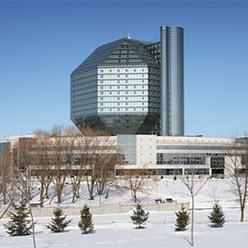MainAbout the LibraryStructure of the LibraryEconomy, maintenance and operation of the building and equipmentSecurity ServiceFire Prevention UnitFire safety rules and emergency directionsHow to prevent forest fire
How to prevent forest fire
Don’t make fire in the forest without absolute necessity. If you can’t do without fire, choose a place where you can easily release the ground from moss and lichen, dry needles and branches. Dig round fire so that barren ground is 0,5 - 1 meter wide. It’s less dangerous to make fire on sand banks of rivers and lakes, wood roads and cuttings, and clear ditches.
Extinguish fire before leaving. Put it out with water, shovel ashes away, make sure that no spark is left. You can cover fire with soil; thickness of layer should be 10 sm. at the least.
Don’t light fire in coniferous underwoods, old burnt woods, peatbogs, near fallen trees, dry rush and stumps, and under trees. Weak and even smoldering fire is very difficult to extinguish when it reaches peatbogs or penetrates under roots and in splits between stones.
Don’t smoke in the forest in motion. Smocking is safer on roads and banks of steams, rivers and lakes. Extinguish carefully cigarettes stubs and pipe tobacco.
Don’t throw away burning matches, extinguish them carefully.
Don’t use wads made of tow, paper and cotton when shooting. Only felt oiled or cork wads are allowed.
Don’t leave bottles (fragments of glass) in the forest: rays of sun may turn a common bottle into burning-glass that may set the forest on the fire.
Casual handling is the main cause of forest fire. However forest fire may be caused by spontaneous ignition of peat or lightning stroke.
 |
 |

